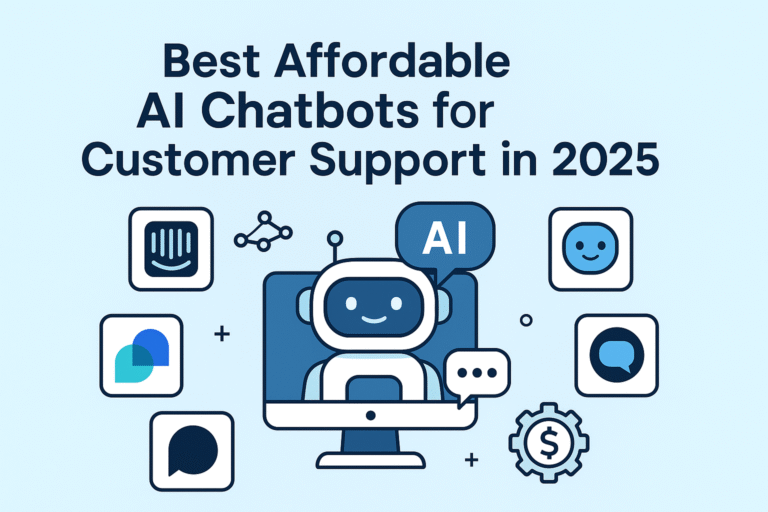As we move into 2025, global education is undergoing a transformation, driven by technology, personalized learning, and a focus on student well-being. The trends shaping the future of education include the integration of AI, mental health programs, hybrid learning, and more. In this post, we’ll dive deep into 10 key trends that will define education in the coming years.
1. AI and Automation in Education
AI is at the forefront of educational innovation, bringing personalized learning experiences, automated grading systems, and more efficient administrative tasks.
Key Features:
- Personalized learning powered by AI.
- Automation of routine administrative tasks.
- AI-powered educational tools for better learning outcomes.
Pros:
- Tailored learning experiences.
- Time-saving for teachers and institutions.
- Real-time feedback for students.
Cons:
- Over-reliance on technology may limit human interaction.
- Potential job loss in administrative roles.
Pricing:
- Free AI tools; paid platforms range from $10/month to $50/month.
Source: AI in Education
2. Personalized Learning for Every Student
Personalized learning will dominate, offering individualized pathways for students to learn at their own pace and according to their strengths and weaknesses.
Key Features:
- Adaptive learning technologies.
- Data-driven insights on student progress.
- Self-paced learning models.
Pros:
- Students can learn at their own speed.
- Increased engagement and motivation.
- Better addresses learning gaps.
Cons:
- High initial investment in technology.
- Not all students benefit equally from this approach.
Pricing:
- Personalized platforms cost between $15 to $100 per student per month.
Source: Personalized Learning
3. Hybrid Learning Models
Blending online and in-person learning, hybrid education provides flexibility for students and teachers alike.
Key Features:
- Mix of face-to-face and virtual classes.
- Flexible scheduling and access to resources.
- Improved learning experience with interactive tools.
Pros:
- Flexible learning for diverse student needs.
- Increased accessibility for remote students.
- Reduces physical infrastructure costs.
Cons:
- Requires stable internet and technology.
- Less personal interaction for younger students.
Pricing:
- Typically, tuition costs remain the same, but online courses may incur extra fees.
Source: Hybrid Learning Trends
4. Emphasis on Mental Health in Schools
Mental health programs are increasingly vital, providing resources and support for students’ emotional well-being.
Key Features:
- School counselors and mental health education.
- Programs targeting stress, anxiety, and mental health awareness.
- Support for emotional intelligence development.
Pros:
- Improved student well-being.
- Enhanced learning environments.
- Lower dropout rates.
Cons:
- High implementation costs for schools.
- Stigma surrounding mental health may hinder access.
Pricing:
- Public schools typically provide mental health services at no extra cost; private programs may require fees.
Source: Mental Health in Education
5. The Rise of EdTech Startups
Innovative EdTech companies are disrupting the education sector, offering new tools and solutions to enhance learning experiences.
Key Features:
- Tools for classroom engagement and online learning.
- Platforms for skill development and certification.
- New models for learning management and assessment.
Pros:
- Innovation and diverse learning solutions.
- Cost-effective compared to traditional methods.
- Scalable across large audiences.
Cons:
- Some platforms may lack quality control.
- Reliance on technology can be a barrier in underserved areas.
Pricing:
- EdTech tools vary widely in pricing, from free apps to premium platforms costing $50+/month.
Source: EdTech Innovations
6. STEM Education Expansion
STEM education will continue to grow in importance as students prepare for future careers in technology, engineering, and mathematics fields.
Key Features:
- Focus on problem-solving and critical thinking.
- Encourages hands-on projects and experiments.
- Integration of coding, robotics, and data analysis.
Pros:
- Prepares students for high-demand careers.
- Fosters creativity and innovation.
- Builds a strong foundation for future technological advancements.
Cons:
- Requires specialized training for teachers.
- High resource costs for schools.
Pricing:
- STEM programs range from $10 to $100+ per student per month, depending on the tools and resources used.
Source: STEM Education Trends
7. Gamification in Learning
Gamification is transforming how students engage with educational content by integrating game-like elements into traditional lessons.
Key Features:
- Points, badges, and leaderboards to incentivize learning.
- Interactive, game-based educational tools.
- Real-time feedback to track progress.
Pros:
- Increased student engagement.
- Makes learning fun and rewarding.
- Encourages healthy competition.
Cons:
- May distract students from academic content.
- Can be difficult to implement across all subject areas.
Pricing:
- Many gamification tools are free; paid platforms cost from $10 to $50/month.
Source: Gamification in Education
8. Globalization of Education
Education is becoming more interconnected as students from different countries collaborate and learn from each other in virtual classrooms.
Key Features:
- Online exchange programs and global collaborations.
- Virtual classrooms bridging cultural divides.
- Access to international resources and knowledge.
Pros:
- Fosters cultural understanding and global citizenship.
- Expands access to quality education.
- Enhances learning experiences with diverse perspectives.
Cons:
- Time zone and language barriers.
- Requires significant technological infrastructure.
Pricing:
- Many global education programs are free or low-cost; premium platforms may charge up to $100/month.
Source: Global Education Trends
9. Micro-Credentials and Digital Badges
Micro-credentials are gaining traction as a way to validate specific skills and achievements in a more flexible and accessible manner.
Key Features:
- Short, focused certifications in specific skill sets.
- Digital badges that can be shared on professional networks.
- Flexible learning paths for students.
Pros:
- Recognizes specific competencies and skills.
- Provides students with valuable, actionable credentials.
- Flexible and affordable for adult learners.
Cons:
- Limited recognition in certain industries.
- Can become too fragmented without a standardized system.
Pricing:
- Micro-credential programs vary from free to $500, depending on the provider.
Source: Micro-Credentials and Digital Badges
10. Sustainability and Green Schools
Schools are integrating sustainability into their curricula and operations, aiming to create a greener, more eco-friendly learning environment.
Key Features:
- Renewable energy sources powering campuses.
- Sustainable school buildings and materials.
- Teaching students about environmental conservation.
Pros:
- Reduces environmental impact.
- Provides hands-on learning experiences for students.
- Encourages responsibility toward the planet.
Cons:
- High upfront costs for sustainable infrastructure.
- Requires ongoing commitment to sustainability.
Pricing:
- Green school programs may require initial investments of $5,000 to $50,000 for schools, with long-term savings on energy.
Source: Sustainability in Education
Conclusion
The future of education in 2025 is filled with innovation, new technologies, and a strong focus on personalization, mental health, and sustainability. These 10 trends show that education is evolving to meet the needs of a changing world. By understanding and embracing these trends, students, teachers, and educational institutions can prepare for a more inclusive and effective learning experience.








